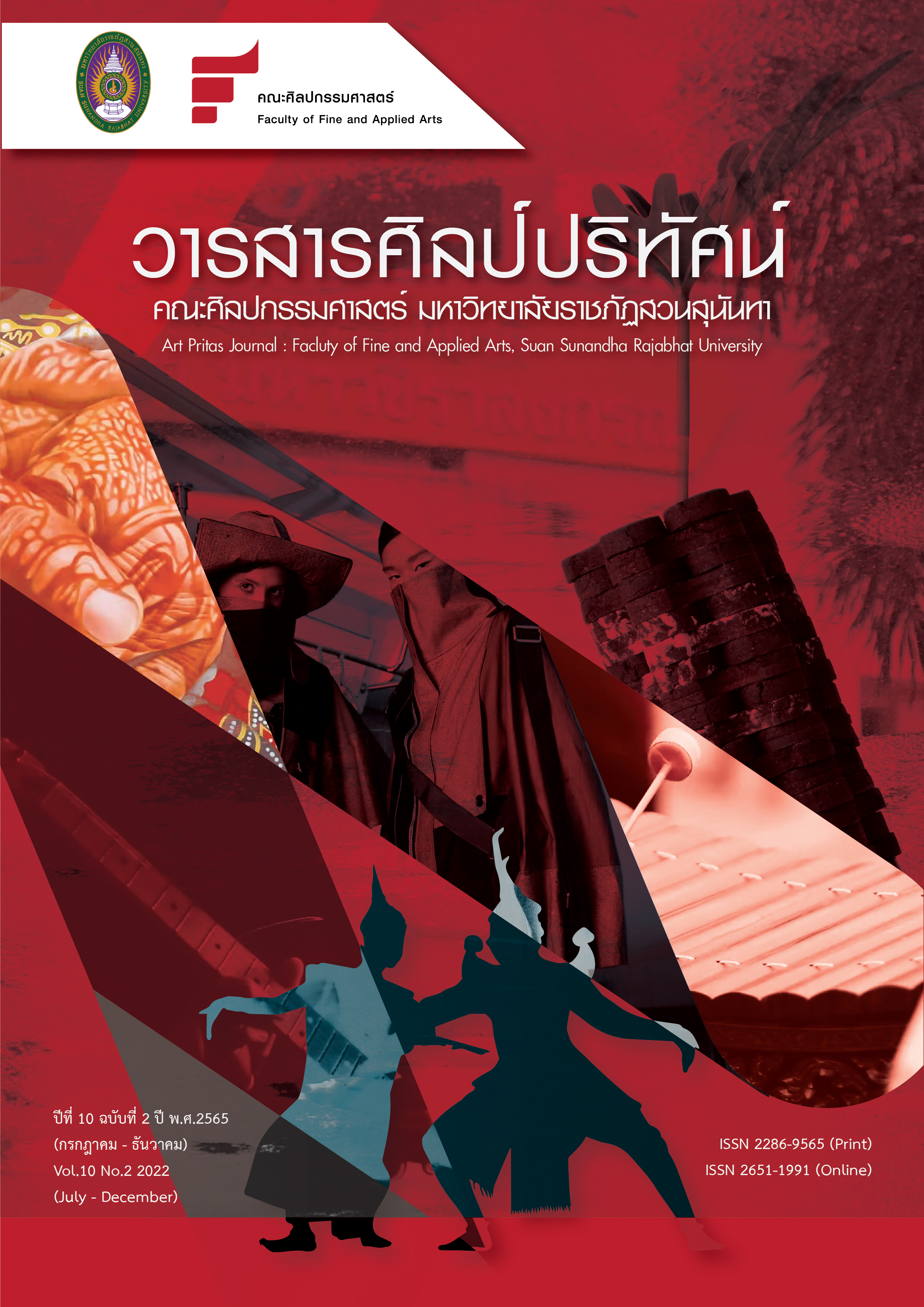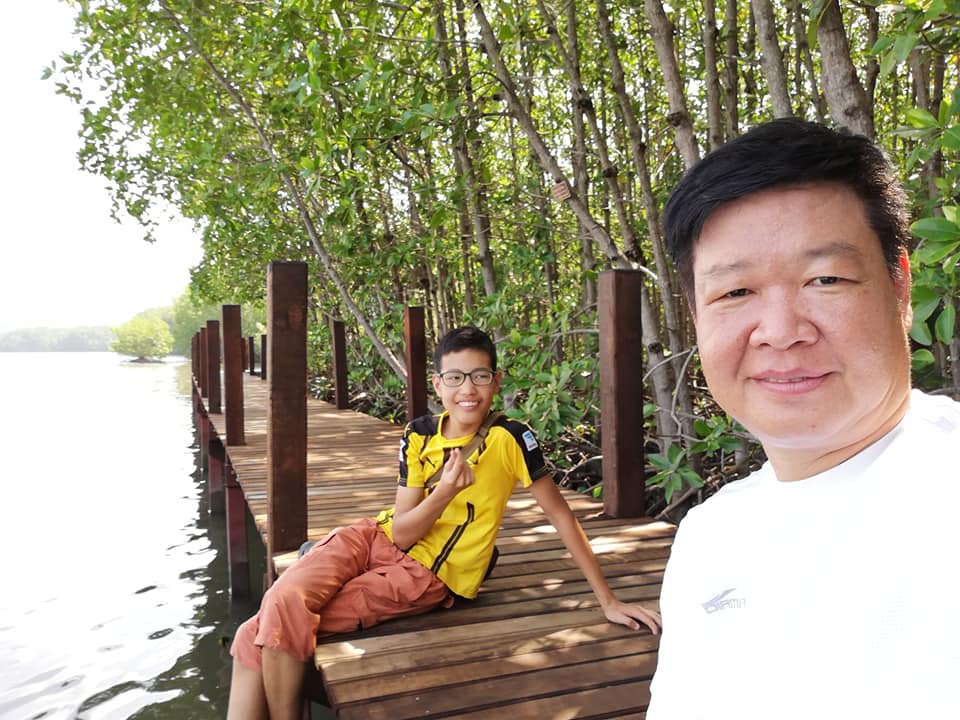การปรับปรุงแบบฝึกหัดเอ้อหูสำหรับเด็กในโรงเรียนหลี่ฉาน เซียงไฮ
Main Article Content
บทคัดย่อ
การศึกษาครั้งนี้มีวัตถุประสงค์เพื่อจัดโครงสร้างแบบฝึกหัดเอ้อหูสำหรับเด็ก ได้แก่ 1) เพื่อศึกษาประสิทธิภาพหลังการเรียนรู้แบบฝึกหัดเอ้อหูแนวใหม่ 2) เพื่อศึกษาความพึงพอใจของนักเรียน และ 3) เพื่อปรับปรุงแบบฝึกหัดเอ้อหูด้วยกลุ่มผู้เชี่ยวชาญ การออกแบบการวิจัยมีวิธีการพัฒนาเพื่อพัฒนาแบบฝึกหัดเอ้อหูโดยการทดลองกลุ่มเดียว กระบวนการวิจัยมี การทบทวนวรรณกรรมที่เกี่ยวข้องและการรวบรวมข้อมูล ให้ผู้เชี่ยวชาญด้านเอ้อหูตรวจสอบแบบฝึกหัดเอ้อหู ผู้วิจัยนำหนังสือแบบฝึกหัดที่พัฒนาเอ้อหูไปทดลองและประเมินผลการสอนรวบรวมข้อมูลผลการสอนวิเคราะห์ข้อมูล ประชากรเป้าหมายคือนักเรียน 10 คน (อายุ 7-9 ปี) ของห้องเรียนปฏิบัติที่เต็มใจเป็นอาสาสมัครเข้าร่วมทดลอง จากโรงเรียนประถมศึกษาหลี่ฉาน เมืองเซียงไฮ ในปีการศึกษา 2019-2020
ผลการวิจัยพบว่า ประสิทธิภาพของนักเรียนหลังจากเรียนรู้แบบฝึกหัดเอ้อหู ได้คะแนนเฉลี่ย 82.35 จากคะแนนเต็ม 100ด้านความพึงพอใจของนักเรียนจากคะแนนการสำรวจพบว่า 261 คะแนน (คะแนนเต็ม 300) คิดเป็นร้อยละ 87. โดยสังเกตว่านักเรียนมีความกระตือรือร้นในการเรียนดียิ่งขึ้น ด้านการปรับปรุงแบบฝึกทักษะเอ้อหูใหม่นั้น ผู้เชี่ยวชาญแนะนำการผสมผสานเพลงพื้นบ้านที่คุ้นเคยมากขึ้นและทำนองจากต่างประเทศ เด็กที่เรียนเอ้อหูยังใกล้ชิดกับศิลปะดนตรีและรักศิลปะดนตรี
Article Details

อนุญาตภายใต้เงื่อนไข Creative Commons Attribution-NonCommercial-NoDerivatives 4.0 International License.
เนื้อหาและข้อมูลในบทความที่ลงตีพิมพ์ในวารสารศิลป์ปริทัศน์ ถือเป็นข้อคิดเห็นและความรับผิดชอบของผู้เขียนบทความโดยตรง ซึ่งกองบรรณาธิการวารสารไม่จำเป็นต้องเห็นด้วย หรือร่วมรับผิดชอบใดๆ
บทความ ข้อมูล เนื้อหา รูปภาพ ฯลฯ ที่ได้รับการตีพิมพ์ในวารสารศิลป์ปริทัศน์ถือเป็นลิขสิทธิ์ของวารสารศิลป์ปริทัศน์
เอกสารอ้างอิง
Bean Tao. (2009). What do we know about practicing. Shangha: Shanghai Music Publishing House.
Li Yali. (2000). Critical Thinking: Essence for Teaching Mathematics and Mathematics Problem Solving Skills. African Journal of Mathematics and Computer Science Research, 5(3), 39-43.
Liu Tianhua. (刘天华). (1997). Complete works of Liu Tianhua. Shangha: Shanghai Music Press.
Liu Xiaodong. (2015). On the benefits of learning Musical Instruments in music teaching. Jilin Education press.
Lok, L. H. (2004). The Erhu and its role as a vehicle for syncretic music performance in Singapore: a thesis presented
in fulfillment of the requirements for the degree of Master of Philosophy in Music at Wellington
Conservatorium of Music, Massey University, Wellington, New Zealand. (Doctoral dissertation, Massey University). from https://scholar.google.com/scholar?hl=th&as_sdt=0%2C5&q=*THE+ERHU+
AND+ITS+ROLE+AS+A+VEHICLE+FOR++SYNCRETIC+MUSIC+PERFORMANCE++IN+SINGAPORE*.pdf&btnG=
Minhui fen. (2004). Min Huifen's collection of Erhu songs. from https://baike.baidu.com/item/
%E9%97%B5%E6%83%A0%E8%8A%AC/2838533?fr=Aladdin.
Qiaojian zhong (乔建忠). (2010). "Time sequence style" folk song and "moon order" tradition. Humanistic:
Humanistic narration of music.
Songfei. (2015). Song Fei Erhu performance album. Retrieved from https://music.douban.com/subject/654226
Steven Peter. (2013). An empirical study on learning satisfaction. New world string press.
Tang xinla. (2002). On the Cultivation of Critical Thinking in Piano-playing education. Journal of Liaoning Normal University (Social Science Edition).
Tony Jin. (2001). Academic performance and achievement. from http://epaper.wxrb.com/paper/wxsb/html/
-05/13/content_395722.htm
Wiggins, J. (2015). Teaching for musical understanding. Oxford University Press.
Yu-gui, X. I. A. N. G. (2010). Universities in General Professional Erhu Music Teaching. Journal of Huaihua University.
from https://en.cnki.com.cn/Article_en/ CJFDTotal-HUAI201010057.htm



